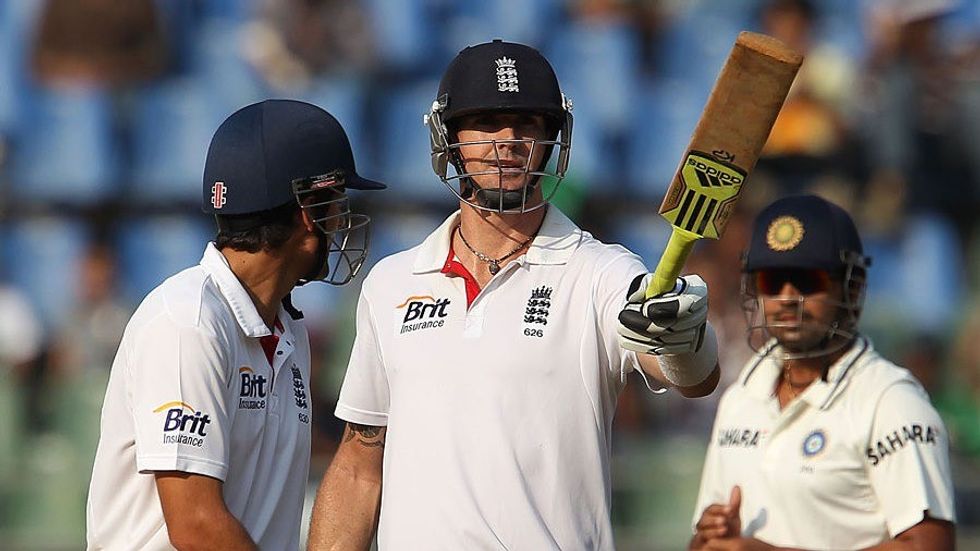India’s juggernaut grows as they join elite Test cricket list
The fearless batting approach of players like Rishabh Pant, combined with the stability offered by seasoned players like Virat Kohli, has enabled India to compete successfully in different conditions
Sports Desk
The Sports Desk is the editorial team responsible for covering the latest news, updates, and analysis from the world of sports. Our team of experienced writers and journalists bring you in-depth coverage of local and international sports events, player profiles, and expert opinions.

India's Virat Kohli, Rohit Sharma and Mohammad Siraj step out on the fourth day of the first Test against Bangladesh in Chennai.
AFP
India registered a resounding 280-run victory over Bangladesh on day four at the M.A. Chidambaram Stadium in Chennai, marking a significant milestone in their cricketing history. For the first time, India's Test record reflects more victories than losses.
With the win over Bangladesh in the first match of the two-match series, India's Test record now stands at 179 victories against 178 defeats, after playing 580 matches. This places India among an elite group of teams that have reached this landmark in the 147-year history of Test cricket.
Throughout the history of Test cricket, only seven teams have ever boasted a winning record. Presently, only five teams maintain this distinction: Australia, England, South Africa, Pakistan, and now India. Australia leads with an impressive 414 wins to 232 losses, while England follows with 397 wins against 325 losses. South Africa's record shows 179 wins compared to 161 losses, and Pakistan's tally stands at 148 wins to 144 losses.

Despite reaching this significant milestone, India’s journey to achieving a winning record was not swift; it took them 92 years. This slow ascent is evident when compared to Australia, which secured its first winning record shortly after their inaugural Test match in 1877. Other teams that have once held a better record than defeats, such as Afghanistan and West Indies, show the competitive landscape of Test cricket.
Currently, five Test-playing nations—New Zealand, Sri Lanka, Zimbabwe, Bangladesh, and Ireland—have yet to achieve a winning record.
India's initial foray into Test cricket began in 1932 with a match against England, where they faced a 158-run defeat. Their first victory came in 1952, also against England, marking the beginning of a long and challenging journey. Since then, India has established itself as a powerhouse, especially at home.
India’s dominance at home
India has been a formidable force in Test matches on its home turf, making it nearly impossible for visiting teams to secure a win. Their exceptional home record has significantly contributed to narrowing the gap between their wins and losses. Since 2013, India has been almost invincible at home, losing only four Tests in that period. Their last series loss on home soil dates back to 2012 against England.

In late 2012, India won the opening Test of that series but suffered defeats in the subsequent matches, leading to a 2-1 deficit before the final match was drawn. Since then, India has played 16 Test series, remaining undefeated in 15 of them, with 39 victories and only four losses.
The backbone of India's success at home can be attributed to players like Ravichandran Ashwin and Ravindra Jadeja. Ashwin, now the second Indian to achieve 500 Test wickets, and Jadeja, known for his all-around abilities, have been pivotal in maintaining India’s dominance. Their impressive performances with the ball on spin-friendly tracks has contributed to the impressive record. They are also valuable with the bat down the order as it was evident in their partnership in the recent first Test against Bangladesh, showcasing their importance to the team.
India’s bowling lineup is bolstered by the likes of Jasprit Bumrah and Mohammed Siraj, considered one of the best new-ball pairings globally. India is the only country that uses SG balls at home. The choice of the SG ball in Indian conditions has also given Indian bowlers an edge, as they have become adept at utilizing its seam for effective reverse swing and turn. Before Bumrah and Siraj, Zaheer Khan and Ishant Sharma also thrived with the SG ball.

Bangladesh pacer, Taskin Ahmed, acknowledged the challenges posed by the SG ball, which his team has struggled to adapt to during their tour.
“We played well in Pakistan overall and hence, we won,” said Taskin during the first Test in Chennai. “In India, the conditions are challenging. India are getting more advantage due to SG balls. Indian cricketers play with SG balls from their childhood. India knows how to use the balls better than us.”
Primed for hat-trick of WTC finals
India’s all-around improvement has helped them reach two consecutive World Test Championship (WTC) finals, and they are in a strong position to qualify for a third. Their victory in Chennai and the 12 WTC points earned solidified their top position with a 71.67%-win percentage, extending their lead over second-placed Australia (62.50%).
India’s first three away Test wins came in a space of three years, with the first against New Zealand in 1968 under Mansoor Ali Khan Pataudi. In 1971, they registered Test wins in West Indies and England under the captaincy of Ajit Wadekar. However, recent triumphs in Australia in 2019 and 2021 shows India’s growing dominance in international cricket, even on foreign soil.

The fearless batting approach of players like Rishabh Pant, combined with the stability offered by seasoned players like Virat Kohli, has enabled India to compete successfully in different conditions.
Looking ahead, India is set to tour Australia later this year for the Border-Gavaskar Trophy, marking the first five-Test series between the two nations since 1991-92. With two consecutive series victories in Australia, India will be keen to extend this success and seek revenge following their defeat in the 2023 World Test Championship final at The Oval.
With an impressive home record and improving performances abroad, the future looks bright for Indian cricket as they aim to build on this historic achievement.










Comments
See what people are discussing